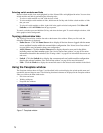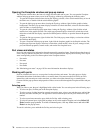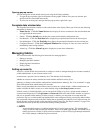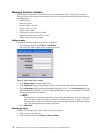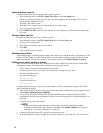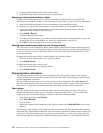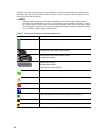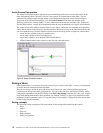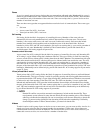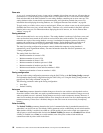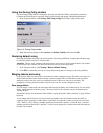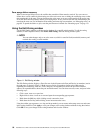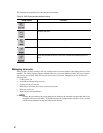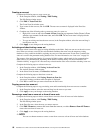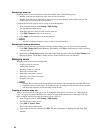
83
Zones
A zone is a named group of ports or devices that can communicate with each other. Membership in a zone is
defined by port number, device Fibre Channel address, or device World Wide Name (WWN). Zone members
can communicate only with members of the same zone. Zones can overlap; that is, a port or device can be a
member of more than one zone.
There are three zone types that are supported but have restrictive levels of communication. These zone types
are:
• Soft zone
• Access control list (ACL) - hard zone
• Virtual private fabric (VPF) - hard zone
Soft zoning
Soft zoning divides the fabric for purposes of controlling discovery. Members of the same soft zone
automatically discover and communicate freely with all other members of the same zone. The soft zone
boundary is not secure; traffic across soft zones can occur if addressed correctly. Soft zones that include
members from multiple switch modules need not include the ports of the interswitch links. Soft zone
boundaries yield to ACL and VPF zone boundaries. Soft zones can overlap; that is, a port can be a member of
more than one soft zone. Membership is defined by Fibre Channel address, port ID and domain ID, or
worldwide name. Soft zoning supports all port modes.
Access control list zones
Access control list (ACL) zoning divides the fabric for purposes of controlling discovery and inbound traffic.
ACL zoning is a type of hard zoning that is hardware enforced. This type of zoning is useful for controlling
access to certain devices without totally isolating them from the fabric. Members can communicate with each
other and transmit outside the ACL zone but cannot receive inbound traffic from outside the zone. The ACL
zone boundary is secure against inbound traffic. ACL zones can overlap; that is, a port can be a member of
more than one ACL zone. ACL zones that include members from multiple switch modules need not include
the ports of the interswitch links. ACL zone boundaries supersede soft zone boundaries but yield to VPF zone
boundaries. Membership can be defined only by port ID and domain ID. ACL zoning supports all port modes
except TL_Ports.
Virtual private fabric zones
Virtual private fabric (VPF) zoning divides the fabric for purposes of controlling discovery and both inbound
and outbound traffic. This type of zoning is useful for providing security and reserving paths between devices
to guarantee bandwidth. VPF zoning is a type of hard zoning that is hardware enforced. Members can transmit
to and receive only from members of the same VPF zone. The VPF zone boundary is secure against both
inbound and outbound traffic. VPF zones that include members from multiple switch modules must include
the ports of the interswitch links. VPF zones cannot overlap; that is, a port can be a member of only one VPF
zone. VPF zone boundaries supersede both soft and ACL zone boundaries. Membership can be defined only
by port ID and domain ID. VPF zoning supports all port modes.
✏ NOTE
Domain ID conflicts can result in automatic reassignment of switch module domain IDs. These
reassignments are not reflected in zones that use domain ID and port number pairs or Fibre Channel
addresses to define their membership. Be sure to reconfigure zones that are affected by a domain ID
change. To prevent zoning definitions from becoming invalid when the membership is defined by
domain ID/port number or Fibre Channel address, you must lock domain IDs.
Aliases
To make it easier to add a group of ports or devices to one or more zones, you can create an alias. An alias is a
named set of ports or devices that are grouped together for convenience. Unlike zones, aliases impose no
communication restrictions between its members. You can add an alias to one or more zones. However, you
cannot add a zone to an alias, nor can an alias be a member of another alias.



